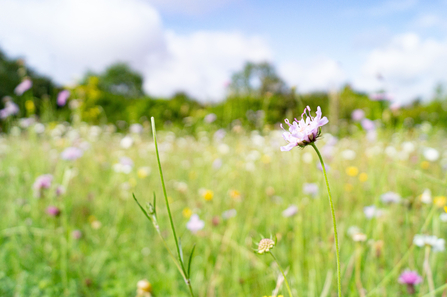Imagine a grassland - a stretch of open land with wildflowers blooming in the summer. The grass rustles and sways as if flowing in a river as the wind whistles over it. Striking yellow cowslips might be dotted around or perhaps vibrant pink wild marjoram (an appearance which constantly changes over the seasons). Often a butterfly dances past, floating around under the gleaming sun’s rays. This is what you might see on a chalk grassland: a habitat present in several sites across Surrey which many of you reading this would probably have visited but perhaps are not fully aware of their importance and rarity - topics this article will cover.
Interestingly, this habitat originates in the Mesolithic and Neolithic times when humans began farming, clearing land to use for agriculture and introducing grazing; this reduced the number of faster growing plant species. Combine that with the low fertility of thin soil on limestone and the sunny, dry climate and a habitat is created that lets low growing grasses flourish. The flora and fauna have become extremely diverse with up to 40 plant species per square meter. Special species such as rare Small blue butterflies call this habitat home. Thus, the continuation of grazing and human activity is needed to stop these areas from growing into woodland, making it a dynamic habitat (called a plagioclimax) that wouldn’t otherwise exist!
However, nowadays chalk grasslands are very rare and have experienced huge levels of decline due to many different reasons. Usage of land has changed such as in agriculture through the introduction of ploughing and less grazing. Even air pollution has led to an increase in nutrients levels. Neglected areas have allowed the succession of the ecosystem to develop further into woodland, starting with scrub encroachment - the growth of species including dog rose and hawthorn.
Consequently, to conserve chalk grasslands, management needs to take place - a volunteering task I have been a part of before by helping to remove scrub that was growing at Sheepleas. On a sunny day, threatened by the grey clouds in the distance and chilled by the wind, a group of volunteers and I spent a day pulling out scrub. We had to get out as much of the roots as possible to prevent it growing back - like tweezing out embedded splinters in the soil. Using tree poppers, we grabbed the base of the plant and ripped it out, trying to drag out the root with it. I had to lean back on this heavy tool to lever each one out; it was difficult but fun work. Even after the whole day, we could barely cover the wide expanse of invading scrub though, ultimately, every little effort helps.


